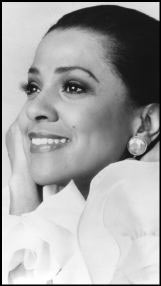TACOMA INTERNATIONAL MUSIC FESTIVAL
Pantages and Rialto Theaters, Tacoma, 253-591-5894, various times and prices opens Tues., Aug. 14 ends Sun., Aug. 19
TACOMA: City or punchline? For a lot of Seattleites, it’s probably more the latter—if they condescend to think about their neighbor at all. Lately, however, Tacoma has seemed committed to expansion in just the area where Seattle tends to be particularly complacent about its superiority: the arts.
On the horizon are a new glass museum and a new building for the Tacoma Art Museum, joining downtown’s two performing arts venues, the Pantages and Rialto Theaters. The desire to show off these two jewels during the slow summer months was the impetus behind another new development, the Tacoma International Music Festival, which opens next Tuesday. It’s the brainchild of piano restorer Obi Manteufel, a longtime Tacoma arts supporter, and the festival’s executive director Eli D. Ashley. To serve as the TIMF’s artistic advisor, Manteufel brought in an old friend—pianist Byron Janis, one of the most acclaimed members of the generation of American pianists that came to prominence right after WWII.
Together, the three came up with an ambitious, multifaceted plan for their first season. The focus of the six concerts will be chamber music, though a festival orchestra will convene for the final concert on Aug. 19. As guest performers, the TIMF is bringing in an interesting mix of top-notch local musicians, including clarinetist Sean Osborn—Tacoma’s prodigal son returning after a decade with the Metropolitan Opera orchestra—and up-and-comers such as pianist Jon Nakamatsu, winner of the 1997 Van Cliburn competition. The festival even has a first-rank classical celebrity in soprano Kathleen Battle, as renowned for her imperious diva behavior as for her voice and artistry.
The repertory is mostly 19th-century classics, with just a few forays into the 20th: quartets by Janᣝek and Shostakovich (his Third), and Milhaud’s Harlem jazz club-inspired ballet suite Le Cr顴ion du Monde. But we’ll hear nothing more recent than the Shostakovich, written in 1946, as the TIMF missed the opportunity to commission a new work to celebrate its inauguration.
Education will also be an important component, with master classes, open rehearsals, and pre-concert lectures one hour prior to each performance. Already looking ahead to next summer, Manteufel is considering jazz and cabaret performances, a higher profile for a festival orchestra (perhaps establishing a youth orchestra), and a schedule expansion to cover two weekends plus the week in between.
But can Pugetopolis support more summer music? To flourish, the TIMF will have to bring in an untapped audience: South Sound residents who love music enough to show up but who might not be committed enough to commute to the region’s other summer concerts. And chamber music fans are not unwilling to travel, heading west to the Olympic Music Festival or east to the one at Icicle Creek. But the TIMF is taking another path, going for the urban ambience of, say, the well- established Seattle Chamber Music Society or the eager, innovative UW Summer Arts Festival.
The TIMF does offer one thing other summer festivals don’t: sheer star power. We usually only get performers of Battle’s or Nakamatsu’s stature during the regular season—a sly way to reel in concertgoers who might otherwise be chamber-musicked out by mid-August. It’s a good sign of Tacoma’s commitment to this festival that it’s starting out big and taking a risk. Seattle supremacists may scoff, but the TIMF looks to be worth a drive down I-5. If its strategy pays off and can pull in the audience, Tacoma will have a strong foundation for a classical music festival that will be able to match anything our city has to offer.







